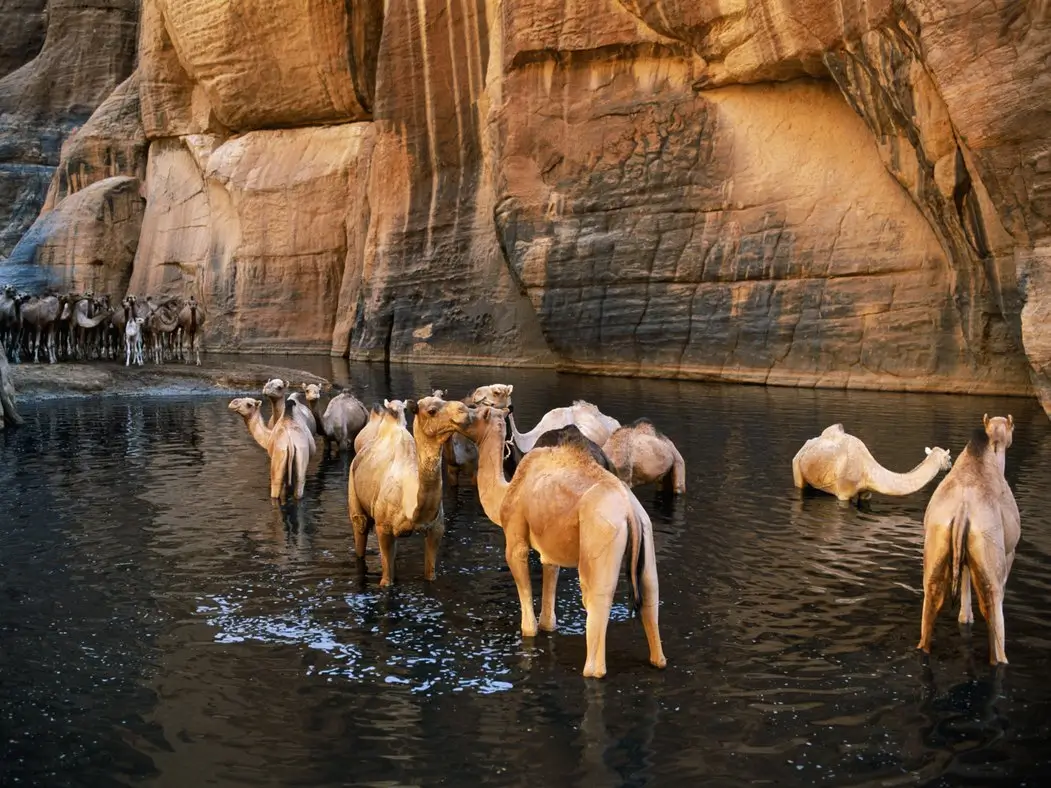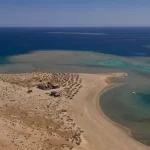Wadi El Gemal National Park Egypt: A Timeless Wilderness Where Desert and Sea Collide

Wadi El Gemal National Park
Introduction
Tucked away on Egypt’s southern Red Sea coast lies a place of untamed wonder—Wadi El Gemal National Park, also known as The Valley of the Camels. This colossal 7,450 square kilometer sanctuary is more than a national park; it’s a portal into an ancient, living world. From majestic desert landscapes to emerald-rich mountains and untouched coral reefs, this eco-paradise is one of Egypt’s most underrated travel gems.
Travelers who venture here are not simply tourists; they become part of a vast, wild landscape where Bedouin heritage, Roman mining towns, rare wildlife, and marine magic coexist in serene harmony.
In this long-form, deeply researched travel guide, we’ll explore everything you need to know about Wadi El Gemal National Park—the top things to do, when to go, what to pack, and how to experience this wonder with the reverence it deserves.
The Soul of the Park: Name and Meaning
“Wadi El Gemal” translates to “Valley of the Camels”—a name that’s as poetic as it is descriptive. Camels roam freely in parts of the park, much like they have for millennia, reflecting the area’s deep Bedouin heritage and nomadic traditions.
The park is one of the few in the world where the name evokes not only the geography but the essence of its wild inhabitants.
Where is Wadi El Gemal National Park Located?
Wadi El Gemal sits about 45 km south of Marsa Alam, along Egypt’s southern Red Sea coastline. It stretches inland into the Eastern Desert and outward into the Red Sea, creating a mosaic of desert, mountain, and marine ecosystems.
-
Nearest Airport: Marsa Alam International Airport (approx. 90-minute drive)
-
Accessible By: 4×4 vehicles, eco-tour operators, private transfers
A Journey Through Time: History of Wadi El Gemal
Before it was a national park, Wadi El Gemal was a corridor of civilization, trade, and conquest. During the Ptolemaic and Roman periods, the region was famed for its emerald mines, once the only known source of emeralds in the ancient world.
The Roman mining settlements of Sikait, Nugrus, and Umm Kabu still exist today as crumbling ruins perched against the dramatic Eastern Desert mountains. The Romans called the area Mons Smaragdus, or “Emerald Mountains.” Even earlier, Pharaonic-era inscriptions were etched into stone, depicting scenes of everyday life and religion.
Exploring these ruins is like walking through time—a raw, unfiltered history lesson carved into the landscape.
The Park’s Ecosystems: Where Five Worlds Converge
Wadi El Gemal is one of the most ecologically diverse protected areas in North Africa. It includes:
-
Desert plains with acacia trees, reptiles, and rare mammals
-
Rocky mountains harboring Roman ruins and gazelle herds
-
Mangrove lagoons teeming with marine nurseries and migratory birds
-
Coral reefs supporting 400+ species of fish and marine life
-
Coastal beaches where sea turtles come to nest
Few places on Earth contain such a wide variety of habitats in such proximity, making this park a goldmine for eco-tourism, education, and conservation.
Top Things to Do in Wadi El Gemal National Park

Wadi El Gemal National Park in Egypt’s Red Sea Coast
1. Jeep Safaris into the Eastern Desert
The best way to experience the vastness of the desert is on a guided 4×4 safari. You’ll venture deep into dry riverbeds, climb mountainous plateaus, and stop at Bedouin camps for fresh tea and cultural exchange.
-
Duration: Half-day or full-day
-
Wildlife: Dorcas gazelles, desert foxes, and ibex
-
Don’t Miss: Prehistoric rock art and fossil beds
2. Hike the Roman Emerald Routes
Feel the weight of history as you hike to the ancient mining town of Sikait. You’ll pass by temples, homes, and mining shafts—all carved from the desert stone.
-
Highlights: Greek inscriptions, Roman columns, panoramic views
-
Best Time to Hike: Early morning or sunset to avoid desert heat
-
Guided Tours: Highly recommended for safety and historical insight
3. Snorkel the Red Sea Reefs
Wadi El Gemal is one of the few parks that includes marine reserves, meaning you can snorkel vibrant coral reefs right from its beaches. Sharm El Luli (Ras Hankorab) and Ras Baghdadi are among the best entry points.
-
Marine Life: Clownfish, parrotfish, sea turtles, eagle rays
-
Reef Health: Pristine—some of the best in the Red Sea
-
Tip: Use reef-safe sunscreen to protect this fragile ecosystem
4. Camp Under a Sky Full of Stars
Forget the noise of cities—the desert nights here are silent, sacred, and spectacular. Many eco-tours offer overnight camping trips that include traditional Bedouin meals, storytelling, and stargazing.
-
Must Try: Handmade Bedouin bread cooked over open flame
-
Perfect For: Couples, solo travelers, small groups
5. Explore the Mangrove Forests of Wadi El Gemal Island
Just off the coast lies Wadi El Gemal Island, surrounded by rare mangrove forests. Kayak, bird-watch, or just bask in the tranquility as you observe nature’s incredible balancing act.
-
Birdlife: Spoonbills, egrets, flamingos
-
Other Fauna: Baby fish, crabs, sea turtles
-
Conservation Note: Do not walk on mangrove roots or disturb wildlife
The Bedouins: Keepers of the Park’s Soul
The Ababda Bedouin tribe has lived in Wadi El Gemal for generations, surviving on camel herding, fishing, herbal medicine, and guiding travelers. Their intimate knowledge of the land is unparalleled.
Visitors often describe sharing tea with a Bedouin host as the highlight of their trip. Their hospitality is legendary, and their storytelling breathes life into the stones and sand.
Wildlife of Wadi El Gemal
| Species | Habitat | Status |
|---|---|---|
| Green Turtle | Coastal waters | Endangered |
| Dugong (Sea Cow) | Seagrass meadows | Vulnerable |
| Nubian Ibex | Mountain ridges | Threatened |
| Greater Flamingo | Coastal lagoons | Migratory species |
| Dorcas Gazelle | Desert plains | Near Threatened |
| Red Fox | Across the park | Common |
Each species plays a critical role in the park’s complex web of life, making conservation a top priority for rangers and eco-tour operators.
When is the Best Time to Visit?
| Season | Temperature Range | Recommended Activities |
|---|---|---|
| October–April | 18–28°C | Safari, hiking, snorkeling |
| May–June | 28–35°C | Early morning activities only |
| July–September | 35–42°C | Not recommended unless guided |
Avoid the summer heat unless you’re well-acclimated and part of a well-equipped guided tour.
Packing Checklist for Wadi El Gemal
-
✅ Lightweight, long-sleeved clothing
-
✅ Sun hat and sunglasses
-
✅ Reef-safe sunscreen
-
✅ Hiking boots or supportive shoes
-
✅ 2+ liters of water per person
-
✅ Camera with extra batteries
-
✅ Flashlight/headlamp for camping
-
✅ Arabic phrasebook or translation app
❓ Frequently Asked Questions
Is it safe to visit Wadi El Gemal National Park?
Absolutely. The park is patrolled by rangers, and all tours are operated by licensed eco-guides. It’s one of the safest places in Egypt for tourists.
Do I need a permit to enter the park?
Most tour operators include the permit in their package. If traveling solo, you may need to register at the entrance.
Can children or elderly people join tours?
Yes, many tours are family-friendly and customizable for all fitness levels.
Are there accommodations inside the park?
Eco-camps are available. You can also stay in Marsa Alam and take day tours.
Can I swim or snorkel year-round?
Yes, but water temperatures and sea conditions are best from April to November.
🌟 Conclusion: Wadi El Gemal is Egypt’s Living Canvas
Wadi El Gemal National Park isn’t just a destination—it’s a living, breathing canvas of desert dreams, marine marvels, and untold history. It is Egypt unfiltered, unspoiled, and unforgettable.
Whether you’re here to snorkel pristine reefs, explore Roman ruins, or sip tea under the stars, this magical corner of Marsa Alam invites you to slow down, look closer, and connect deeper.
✅ Plan your Wadi El Gemal journey with MarsaAlamCity.com—your gateway to Egypt’s greatest natural wonder.







An exceptionally well-researched and enlightening piece of writing. The concept was easily grasped because to your clear and succinct explanations; the examples provided were also quite useful. Your views and knowledge are much appreciated.
Very good https://is.gd/tpjNyL
Awesome https://t.ly/tndaA
Awesome https://is.gd/N1ikS2
Good https://is.gd/N1ikS2
https://shorturl.fm/oYjg5
https://shorturl.fm/68Y8V
https://shorturl.fm/XIZGD
https://shorturl.fm/TbTre
https://shorturl.fm/m8ueY
https://shorturl.fm/68Y8V
https://shorturl.fm/oYjg5
https://shorturl.fm/68Y8V
https://shorturl.fm/a0B2m
https://shorturl.fm/N6nl1
https://shorturl.fm/YvSxU
https://shorturl.fm/N6nl1
https://shorturl.fm/0oNbA
https://shorturl.fm/Kp34g
https://shorturl.fm/Kp34g
https://shorturl.fm/retLL
https://shorturl.fm/IPXDm
https://shorturl.fm/VeYJe
[…] Wadi El Gemal exploration rides […]